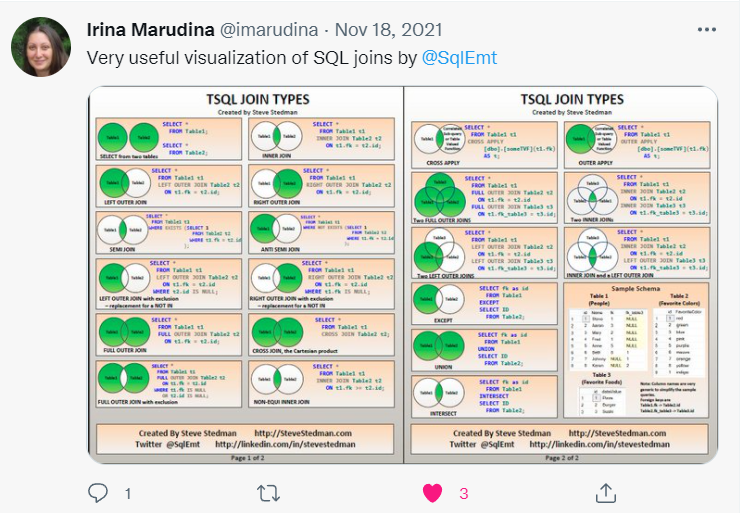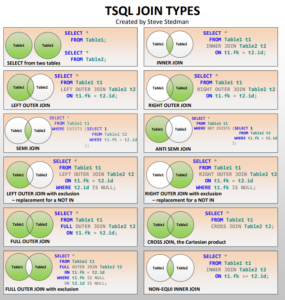Multiple Joins – Poster

SQL Server provides several join types to combine data from two or more tables based on a common column or set of columns. Among these are the essential join types, including INNER JOIN, LEFT OUTER JOIN, RIGHT OUTER JOIN, and FULL OUTER JOIN. In addition, SQL Server also supports multiple inner joins or multiple outer joins, which can be used to join more than two tables.
Multiple inner joins are used when you need to join three or more tables, and each table has a foreign key column that matches the primary key column of the previous table. To perform multiple inner joins, you simply use the JOIN keyword multiple times, specifying the tables to join and the columns on which to join them.
For example, to join three tables A, B, and C, where A has a foreign key column that matches the primary key column of B, and B has a foreign key column that matches the primary key column of C, you can use the following SQL statement:
SELECT * FROM A
INNER JOIN B ON A.key = B.key
INNER JOIN C ON B.key = C.keyMultiple outer joins are used when you need to retrieve all the data from two or more tables, including the rows that do not have a match in the other table. To perform multiple outer joins, you can use the LEFT OUTER JOIN, RIGHT OUTER JOIN, or FULL OUTER JOIN keyword multiple times, specifying the tables to join and the columns on which to join them.
For example, to join three tables A, B, and C, where A has a foreign key column that matches the primary key column of B, and B has a foreign key column that matches the primary key column of C, you can use the following SQL statement:
SELECT * FROM A
LEFT OUTER JOIN B ON A.key = B.key
LEFT OUTER JOIN C ON B.key = C.keyIn this example, the LEFT OUTER JOIN keyword is used twice to retrieve all the rows from table A and the matching rows from tables B and C.
Multiple inner joins and multiple outer joins can be used to combine data from multiple tables in complex queries. However, it’s important to use them wisely and avoid creating overly complex queries that are difficult to understand and maintain.

To learn more about SQL Server join types, including multiple inner joins and multiple outer joins, consider enrolling in our Free Join Types Fundamentals course by Steve Stedman or checking out his free SQL Server Joins poster at https://stevestedman.com/poster.
More from Stedman Solutions:

Steve and the team at Stedman Solutions are here for all your SQL Server needs.
Contact us today for your free 30 minute consultation..
We are ready to help!

Leave a Reply